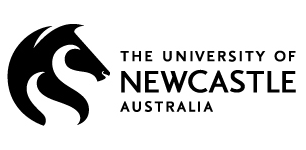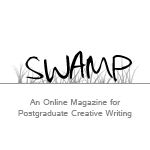My Illogical Soothsayer
Linda Collins (University of Wellington, New Zealand)
We are not all factory-processed clones. Our genetics are different – which would play a part in the fact that we all respond to adverse life events differently. Some of us have an increased risk of depression, which would thus affect our responses.
– Extract from a journal by my daughter Victoria McLeod, who took her own life aged 17
The most ancient of all living reptiles sits at the entrance to its burrow. The tuatara, native to New Zealand, is motionless except for an occasional blink from its mud-brown eyes. I peer back. I’m at Zealandia, a nature sanctuary that is helping restore endangered native species. The 225ha reserve is fenced off from predators and set in a lush valley through which a seismic fault runs, just 3km or so from the central business district in Wellington, New Zealand. The predator-proof fence has enabled native plants, animals and insects to regain a foothold and now, to flourish. It is only in the last 800 years that they came under attack, with the arrival of human settlers and pests.
The tuatara, with its leather-like, spiky hide, squat body and splayed legs, looks like a small iguana lizard. But it is a reptile, the only survivor of an order whose other members died out about the same time the dinosaurs did.
The tuatara has not moved. It has stood in front of burrows like this for 60 million years. Its survival mantra: Find your space. Stay very still.
Another native creature, a North Island robin, picks at the earth by my feet. It is unaware of its vulnerability. It doesn’t even glance around. The fear response is not in its DNA. Its survival mantra: it doesn’t have one.
A park guide shows me a feeding platform where kaka (native parrots) have learnt to lift lids with their feet to obtain food pellets within. The staff at the sanctuary, have experimented over the years with food to enhance the kaka’s usual diet of native fruit, berries, flowers and insects. At first, they put out vegetable scraps. One bird developed an addiction to sweetcorn. They had to put a halt to that feeding programme when its chicks were born with deformed beaks as a result of this diet.
At the Zealandia café, one of the waitresses looks like my late daughter. She seems about 20, the age Victoria would have been had she not died by suicide three years ago. The waitress has the same height, flat feet, lean body, white-blue paleness, long neck and splayed collarbones. She wears her fine, flowing hair in Vic’s signature style, a topknot. It takes a particular skull shape to wear the hair like that. I can’t, it sits awkwardly and my forehead is too high. That topknot sweeping past me as I sip an Americano is enviably graceful. Yet the coffee tastes unbearably bitter as I recall other graceful topknots, of my hands tucking loose strands behind ears in a gesture of motherly love.
I have to watch myself: Grief makes one look for meanings and patterns of connection to lost loved ones to the point of obsession.
Indeed, unlike my daughter, who got easily flustered when put on the spot, the waitress shows no signs of being pressured as she interacts calmly and efficiently with patrons. She takes their orders without hesitation or doubt. Victoria could not have done this; she had trouble processing verbal commands. She needed to think about things for a while. She had attention deficit disorder, although I saw it not so much a deficit of attention so much as a surfeit of a rich imaginative inner life from which she was reluctant to drag herself for the mundane tasks of the day. Anyway, it was ADHD of the inattentive, dreamy kind; not the hyperactive version, though both share a lack of impulse control.
The disorder doesn’t mean that Victoria wasn’t intelligent. Far from it. Vic was brilliant at analysing literary texts and artwork. But that doesn’t help you in the workplace, in a café taking orders quick-smart.
***
The café worker may resemble my daughter in appearance, but she is a socially assured version. She smiles as she tells me the specials of the day, displaying a broad Kiwi accent. It’s possible that she may have never lived outside her habitat, unlike Victoria, who spent much of her life in Singapore, with her father Malcolm and myself, although we are New Zealanders. Singapore is a small island with a population larger than that of New Zealand’s, and which has a stressful environment amid competition for resources such as school places and jobs, and pressure on foreigners to perform well to justify their work permits. Malcolm and I lived there for survival: for jobs in the volatile media industry that we could not get back home.
Later, the waitress passes me with plates of food deftly carried in layers up her arms. She catches my eye. And does a very Victoria thing. She gives a smirk, not a knowing teenagey smirk, but one of “Well, it’s a funny old world, then, and we both know it”. She has a dimple on the right side of her face, by her mouth, like Vic, and the smirk crunches her pink cheek in an endearing way.
Victoria comes towards me.
For a moment, I am seeing my dearest wish come true. She is alive.
The randomness of the scattering of DNA across human beings has combined in this aproned café worker to give me a glimpse of my dead daughter, and even a behavioural trait. Had she lived.
And then she’s gone, bustling into the kitchen.
A friend, when told of Vic’s death by suicide, blurted, “Natural selection”. The insensitivity was lost on them, I think, as they are of pragmatic farming stock. But a cruel truth lurks there. My husband and I nurtured a daughter who was neurologically challenged for existence in today’s whirl of academic measurement, pressure to be a productive economic unit, and to acquire material goods. We, as parents, tried to prepare her for the harsh realities of contemporary survival: We hired maths tutors, did courses on how to boost confidence in kids, gave her lots of positive reinforcement. Oh, and loved her to bits. But it wasn’t enough.
“I am nothing but an illogical soothsayer”, she once wrote after doing a Myers-Brigg personality test and finding she was an introvert, intuitive, thinking, feeling type – rendering her virtually unemployable in any competitive corporate setting, she believed.
In the café, staring at the swinging kitchen door, I resist tears of sadness and longing. I choose to see this glimpse of my daughter as a gift, and a reminder of the underlying physicality and neurology of life itself – and also, of its mysterious randomness.
The tuatara stays still, in its sanctuary. A robin pecks at earth that will fracture one day. There are no more deformed kaka beaks, for now. I nurtured a daughter, and it was not enough. My Vic, with a nature too sensitive for this world, is gone. But the physicality of her, and so, an essence of her, lives on, in the triumphant DNA of survivors, in the ghostly echoes of a topknot, a knowing smirk, a way of being in the world.
Linda Collins is undertaking an MA in Creative Writing with the International Institute of Modern Letters (IIML) at Victoria University, Wellington, New Zealand. Her genre is creative non-fiction and she is writing a memoir titled Loss Adjustment about the death by suicide of her daughter Victoria McLeod, aged 17. Her background is in newspaper and book editing. In Singapore, she has worked on the political desk of The Straits Times and is copyeditor of the Lee Kuan Yew book, Hard Truths to Keep Singapore Going. A New Zealander, Linda has worked in London and also Sydney where she was chief sub-editor of The Australian Financial Review.






